What can you plant next to onions?
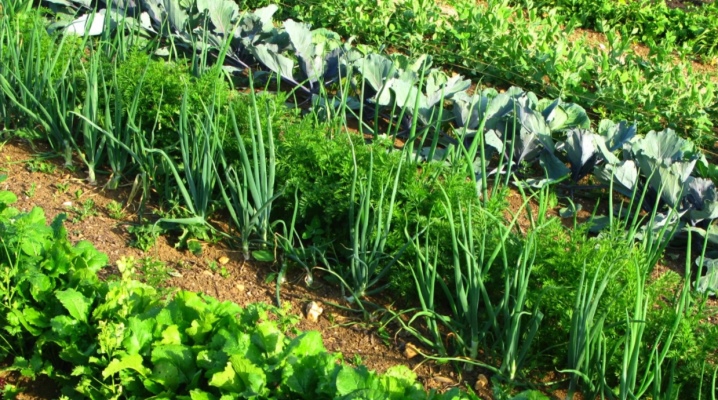
Onions are a good neighbor for many vegetable and flower crops. But it can also have a negative impact on some of them. In order to get good yields, it is necessary to properly organize the neighborhood of vegetables and take proper care of each crop.
Useful crops
Onions are one of the most popular vegetable crops that summer residents grow on their backyards. He is not particularly demanding in care, resistant to most diseases. Only the onion fly poses an increased danger to him. This vegetable also remains tolerant to the composition of the soil. The only exception is lime soil. Considering all these requirements, you can grow a good harvest of any type of onion.
Sometimes, even with proper care, the onion grows poorly and the harvest remains poor. In this case, you need to pay attention to the neighbors of the vegetable crop in the garden. It is possible that they are the reason for such poor development, since they have a negative impact.
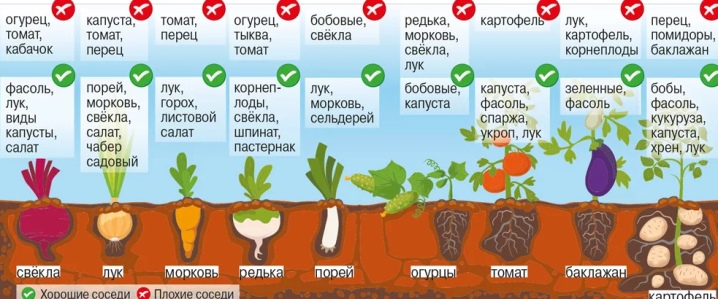
In order to decide on useful neighbors for onions, you need to learn about some of its features. The fact is that this vegetable has a rather weak root system. The roots are thin, located in the upper layers of the soil. The maximum deepening is 30 cm. He loves sunny areas and moderately abundant watering.
One of the favorable neighbors for this vegetable is carrots. She very well drives away a dangerous pest - the onion fly. In addition, onions and carrots have almost the same requirements in relation to the soil, so they can be safely planted side by side. These vegetables will get along well both in neighboring beds and in the aisles of each other.
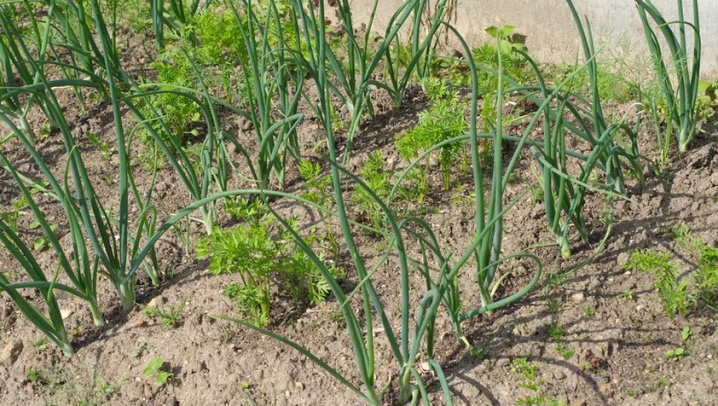
Onion and garlic can be grown in neighboring beds. They do not have any negative effect on each other, but they will not get along in the same bed, since they take the same nutrients from the soil. This, in turn, can lead to depletion of the soil and, as a result, to a decrease in the yield of both crops.
A good neighbor for onions is beets. Onions have a beneficial effect on the size of the root crop. As it develops, it releases long and thick green feathers that create shadow. Shade loves beets.
Onions can be safely grown in adjacent cabbage beds. Various types of this vegetable are suitable: broccoli, colored, kohlrabi. Cabbage needs abundant watering. That part of the moisture that turns out to be superfluous will be absorbed with pleasure by onion turnips.
But in the same garden, such vegetables do not get along very well, since both prefer a lot of sunlight. If you plant them on one piece of land, then they will overlap it.
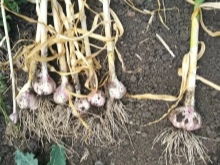
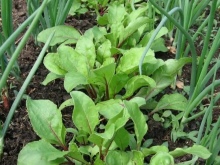
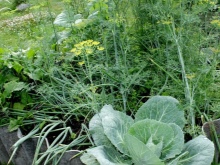
Onions are also a good neighbor for vegetables such as:
- turnip;
- tomatoes;
- radish.
It actively repels pests that attack these vegetable crops. Tomatoes are susceptible to earthen flea beetles. Sensing an onion smell nearby, this pest immediately leaves the site.
Such crops as dill, strawberries and strawberries, cucumbers, lettuce, cilantro have a good combination with onions. But it is not recommended to grow them on the same bed. Cucumbers and all greens like abundant watering, from which onions can begin to rot.
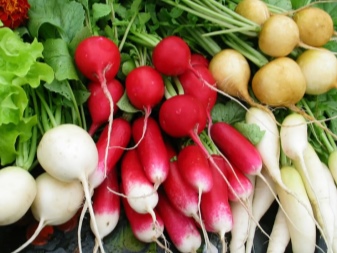
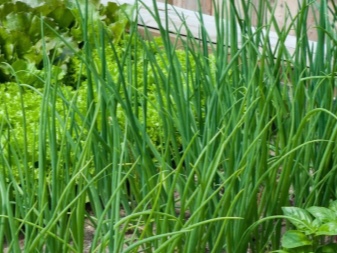
Neutral plants
Neutral vegetables for onions include those that, located in adjacent beds, do not provide any benefit.At the same time, there is no negative impact either. These plants include the following.
- Zucchini. They, like onions, easily cope with a slight cold snap, like moderate watering and weeding.
- Parsley. These vegetable crops are quite capable of growing in the same garden without causing any harm to each other.
- Various types of salads.
All of the above plants coexist well with each other without exerting almost any effect. They can be planted together without worrying about quality degradation or reduced yield.

Unwanted joint landings
There are vegetables and other cultivated plants that do not get along well with onions in the same garden. In addition, it is highly discouraged to grow them even on neighboring land plots. One such undesirable vegetable crop is cabbage. The point is that both vegetables take the same nutrients from the soil.
So, both onions and cabbage love nitrogen. If they are grown in close proximity to each other, then the soil becomes very scarce. Onions and cabbage begin to lack nutrients. This immediately affects their external condition, and then the amount of the crop.
Cabbage is attacked by various pests. Small holes appear on the forks and leaves as a result of insect attacks. The feather begins to turn yellow much earlier than the due date, lays down on the ground. In this state, he has to be dug up, although in fact he has not yet reached the peak of his maturity.
In addition, cabbage is often quite spreading. Thick and large leaves shade the onion bed. It also negatively affects the condition of this vegetable.
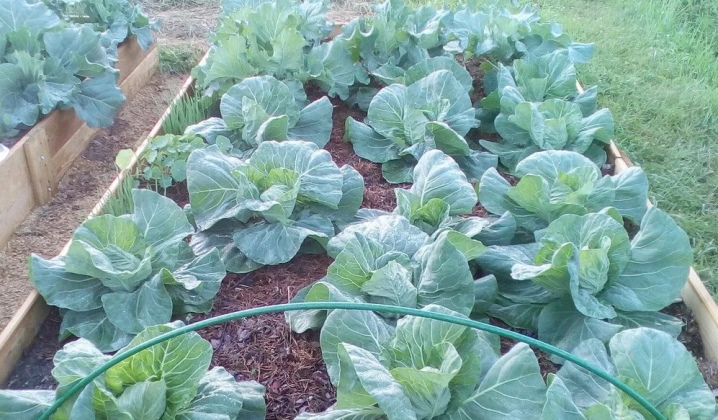
Other highly undesirable neighbors for onions are legumes. Beans, peas, and beans can be safely included in this category. Initially, this statement seems to be wrong, because experienced gardeners know that legumes and onions do not take identical nutrients from the soil. But they, really, cannot be grown next to each other, since legumes actively give new shoots, which can simply strangle the vegetable, preventing proper development. At the same time, the bow does not have any negative impact on its part.
It is not recommended to grow a plant such as sage in the immediate vicinity of this vegetable. It, like legumes, is a fairly aggressive crop. By its activity, sage can interfere with the normal development of onion turnips.
Many gardeners claim that onions, with proper care, grow well with neighbors such as legumes and cabbage. But in reality this is not the case. In any case, these crops will negatively affect the onion garden.
If you plant onions with more favorable neighbors, then the harvest will delight not only in quantity, but also in quality. But sometimes it happens that even near the most favorable neighbors, the vegetable begins to wither, and the autumn harvest is meager. In this case, we can talk about improper crop care or poor soil preparation.
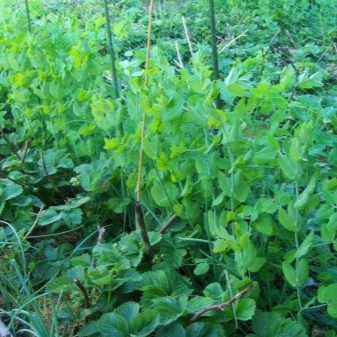
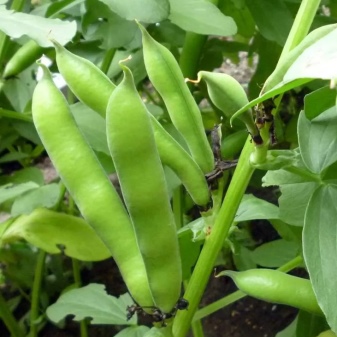
The fact is that not only neighbors, but also predecessors play an important role for this vegetable. The latter refers to those vegetable crops that were grown in the current onion garden a year or two earlier. Here you need to focus on those crops that eat the same substances with onions.
As an example, you can take all the same white cabbage. Since it takes a very large amount of nitrogen from the soil, after its cultivation, the soil becomes scarce for this mineral. If you plant onions in the same place next year, then even with favorable neighbors and proper care, you should not expect a large harvest.
Before making an onion bed in this place, the soil must first be prepared. For this, it is recommended to introduce nitrogen-containing fertilizers into the soil for two years in a row.After the soil is again enriched with the substance, you can safely grow any kind of onion in this place. But even in this case, one should not forget about correctly selected neighbors.
If you take into account all these features, observe the crop rotation and initially correctly arrange the vegetables on the garden plot, then the yield will always be high. At the same time, if there is appropriate care, the quality will delight not only the turnips, but also the onion feather.
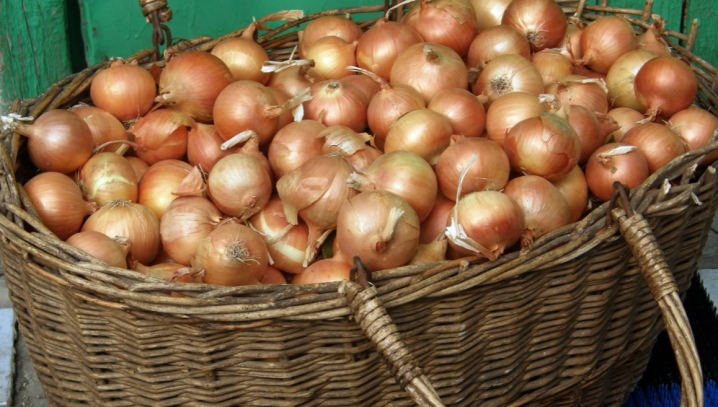













The comment was sent successfully.